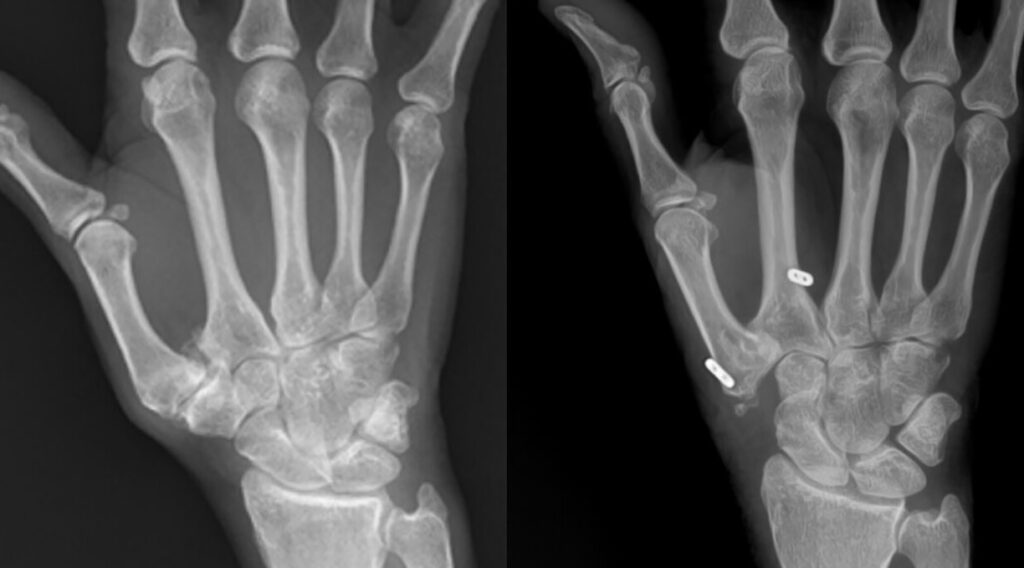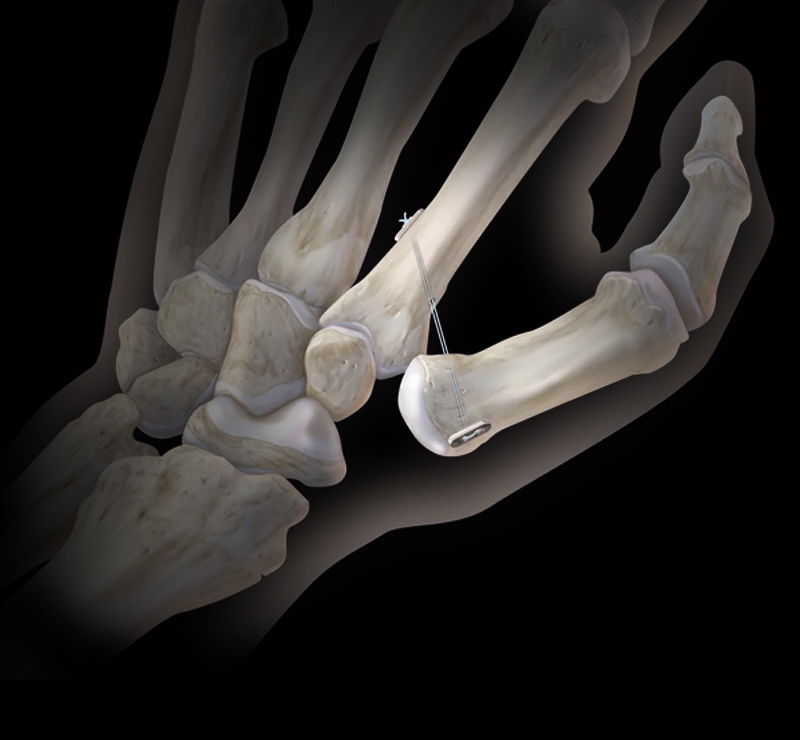Surgery for arthritis at the base of the thumb is also known as a Trapeziectomy. This highly effective procedure alleviates pain and restores function in the thumb joint.
Indications for surgery
Surgery is generally recommended if you are experiencing:
- Persistent pain at the base of the thumb that interferes with daily activities
- Limited success with non-surgical treatments such as splinting, medications, or injections
- Advanced arthritis leading to deformity or weakness in the thumb joint
Common symptoms include pain during pinching and gripping movements, swelling, and difficulty performing simple tasks like opening jars or writing. If you are a young manual worker where strength is more important than movement, fusion of the joint connecting the two arthritic bones together may be a better option. Read more about base of thumb arthritis below, or continue on here to read about surgical treatment.
What the surgery involves
Trapeziectomy with Suspensionplasty
The arthritic bone (trapezium) is carefully removed, and a synthetic material or tendon graft is used to suspend the thumb joint to the base of the index finger and maintain its stability and alignment.

What to expect after surgery
After the operation, your hand will be immobilised in a plaster splint or dressing for protection. A custom-made removable splint then replaces the plaster splint after the first week or two.
Gentle exercises with a hand therapist will be recommended to help restore strength and mobility, and light activities can typically be resumed within 4–6 weeks. Full recovery, including restored strength and range of motion, may take up to six months. Dr Lambers’ full trapeziectomy rehabilitation protocol is below:
How long will you be in hospital?
A Trapeziectomy is performed as a day procedure. You will go home on the same day with simple pain relief such as paracetamol and ibuprofen.
Potential risks
While most individuals experience significant pain relief and improved thumb function, there are potential risks, including:
- Joint Instability or Collapse: Rare but may lead to recurrence of symptoms.
- Nerve or Vessel Damage: This can result in numbness or prolonged discomfort.
- Incomplete Recovery: Some stiffness or weakness may persist, particularly in severe cases.
- Swelling or Scarring: Post-operative swelling around the thumb base may take months to subside.
Choosing to proceed with surgery
This procedure is a personal decision that requires careful consideration. Take your time to explore all your options, ask questions, and reflect on your goals for treatment. Dr Lambers will work with you to ensure you feel confident in your choice, whether that’s pursuing surgery or opting to manage the condition non-surgically.

